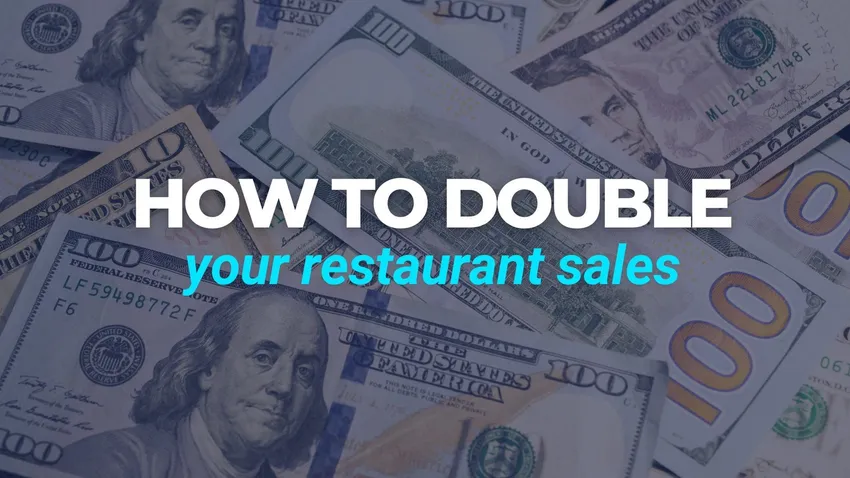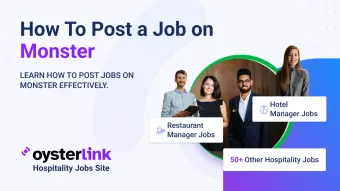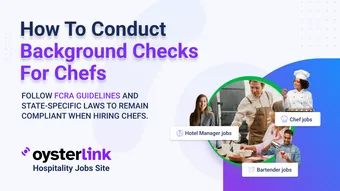Restaurant Sales Growth: 3 Key Takeaways
- U.S. restaurants hit $98.6B in monthly sales in early 2025 — a $5B increase year-over-year, proving consistent demand growth.
- Menu optimization boosts sales by 3.3% — featuring high-margin seasonal items leads to higher revenue per customer.
- POS data insights can improve margins by up to 20% — smart tech helps identify top-selling items and maximize profit.
Restaurant sales growth is on the rise, with industry sales projected to hit $1.5 trillion by 2025.
Your restaurant can be part of this upward trend by applying smart, data-driven strategies.
With 10 straight months of sales increases and 81% of consumers eager to dine out more, now is the time to capitalize on market momentum and grow your bottom line.
Current Restaurant Sales Growth Data for 2025
The latest data from January 2025 shows eating and drinking establishments generated total sales of $98.60 billion on a seasonally adjusted basis.
Sales have grown consistently for ten straight months, with the sector's monthly volume climbing by almost $5.00 billion.
Latest industry growth numbers
Restaurants have become a major economic force that contributes 3.8% to the country's gross domestic product.
The monthly sales figures show strong consumer confidence, and restaurants perform better than other retail sectors.
Restaurant sales continued to rise while non-restaurant retail sales dropped by 1.2%.
The industry's employment outlook appears bright.
The sector expects to add 200,000 new jobs in 2025, which will boost total restaurant and foodservice employment to 15.9 million.
These numbers reinforce the restaurant industry's position as the nation's second-largest private-sector employer.
Key market trends affecting sales
The most important trends shape restaurant sales in 2025.
Health-conscious dining has gained momentum as customers look for plant-based, organic and nutrient-rich menu options.
Online ordering drives substantial revenue, with 50% of restaurant operators reporting higher off-premises sales compared to 2019 levels.
Customer behavior shows interesting changes in dining priorities.
Families now spend 56% of their food budget at restaurants, up dramatically from 25% in 1955.
The market still has room to grow since 42% of adults say they don't eat at restaurants as often as they'd like.
The economy creates both opportunities and challenges.
Employment and wages show healthy growth rates, but some households struggle with rising debt levels and declining savings rates.
All the same, eating and drinking place sales grew 2.0% between January 2024 and January 2025 after adjusting for menu price inflation.
The Restaurant Performance Index (RPI) stands at 100.4 that indicates industry expansion.
Economic forecasts project real GDP to grow by 2.4% in 2025.
Consumer prices should rise by just 2.4% in 2025, down from 2.9% last year.
These numbers point to a more stable cost environment for restaurants and their customers.
Smart Menu Changes That Boost Restaurant Sales Growth
Smart menu changes are the quickest way to boost your restaurant's profits.
You can create a menu that drives better sales when you focus on pricing strategies, items with high margins and seasonal planning.
Price optimization techniques
The right menu pricing needs to balance profits with how customers see value.
Research shows that prices without dollar signs and using .95 instead of round numbers can shape what people order.
Displaying costs in smaller, lighter fonts helps diners focus on food descriptions rather than prices.
Your menu layout makes a big difference in sales.
Restaurants that cut down their menu items saw their sales grow by 3.3%, which was better than competitors who only reached 1.9% growth.
You'll get better results when you highlight two profitable items in each section - this guides choices without overwhelming customers.
High-profit menu items
Finding and promoting your most profitable dishes will help grow sales.
Basic sides like steamed rice and French fries usually bring in good margins. Drinks are even better with an 85% gross profit margin.
Plant-based dishes give you another chance to increase profits since their ingredients cost nowhere near what meat does.
Plates that need little prep time, like meat and cheese boards, help keep labor costs down.
Seasonal menu planning
Your menu should change with the seasons. This lets you use ingredients when they're fresh and match what customers want.
Instead of completely changing everything, add new seasonal items every few months.
Regular customers will look forward to trying something new. Seasonal changes on your menu will affect your profits by a lot.
About 59% of diners are more likely to buy items labeled as seasonal.
The numbers also show 38% of customers prefer places that serve local food.
Working with suppliers in your area cuts delivery costs and creates great stories about fresh, seasonal ingredients.
Customer feedback about seasonal dishes helps you plan better.
The data you collect will help you make smart updates that keep both customers happy and profits healthy.
Digital Tools to Track Restaurant Sales Growth
Restaurant owners need powerful digital tools that give useful business information.
Modern technology offers precise ways to monitor sales growth and make evidence-based decisions.
POS system features that matter
A reliable Point of Sale (POS) system is the foundation of restaurant operations.
The best systems provide up-to-the-minute data analysis on sales trends, popular items and peak business hours.
This information helps make smarter decisions about pricing, promotions and staffing.
Toast excels with its complete inventory management system that has real-time sales updates and low stock alerts.
The platform's automatic tip-sharing feature and mobile-friendly reports help track profit margins well.
The cost management tools analyze labor expenses and dish costs while considering fixed overhead costs.
Sales tracking software options
Modern sales tracking solutions do more than simple transaction recording.
Restaurant analytics software helps identify high-margin dishes, adjust prices based on performance and prevent over-ordering through precise inventory tracking.
Cloud-based systems let you access operational data remotely and monitor multiple locations at once.
These platforms create detailed reports on sales, profit margins and customer priorities.
To name just one example, OpenTable's complete reports give valuable information about guest behavior, revenue trends and reservation patterns.
Operandio's up-to-the-minute tracking capabilities spot delays, missed tasks and service bottlenecks instantly.
Quick adjustments can prevent slowdowns that might affect customer experience.
The system creates daily, weekly or monthly reports that team members can easily share.
POS data analysis usually improves margins by 15-20% through menu performance tracking and reduces labor costs by 10-15% through peak hours analysis.
These tools are especially useful for inventory management with features like stock alerts, bulk uploads and cost versus profit management tools.
Training Staff to Increase Restaurant Sales Growth
Skilled servers create restaurant success through proven sales techniques and exceptional service.
Staff training programs boost check averages and create memorable dining experiences.
Teaching upselling techniques
Servers need more than simple menu knowledge to excel at upselling.
Kitchen staff should prepare new dishes for Servers to taste, which helps them describe flavors with confidence.
Their direct experience leads to genuine recommendations that feel like good service rather than sales pitches.
Servers should see themselves as independent contractors who manage their own territory.
This transformation motivates them to optimize sales opportunities since higher check averages directly increase their tips.
Running friendly competitions among staff members works well, with rewards like preferred shift selections for top performers.
Hosts should plant sales seeds during the guest's first interaction.
They can highlight signature items and daily specials while walking diners to their tables.
Servers should then follow up on these suggestions to create a coordinated approach to upselling.
Customer service best practices
Outstanding service starts with proper training in guest interactions. 70% of restaurant workers receive no formal customer service training.
Role-playing exercises during training sessions build confidence in handling various service scenarios.
These practice sessions help staff develop their unique style while becoming skilled at essential service techniques.
Clear service guidelines outline simple customer interaction structures.
They should include specific examples of appropriate responses to common situations, from greeting guests to handling special requests.
Regular refresher sessions maintain consistent service standards. Customer feedback identifies areas for service improvement.
This data helps update training programs and recognize staff members who consistently receive positive guest comments.
Restaurants that invest in ongoing staff development see higher customer satisfaction rates and increased repeat business.
Final Tips for Restaurant Sales Growth Success
Success in 2025 demands more than just good food - restaurants need smart strategies and excellent execution.
Menu optimization, digital tools and staff training create a powerful foundation for growth.
Your well-trained team turns these advantages into real profits.
The market shows huge potential - 81% of customers want to dine out more often.
Restaurants succeed by:
- Building profitable menus that sell
- Using POS data to spot opportunities
- Maintaining consistently excellent service
Pick one area to perfect first:
- Menu changes that boost profits
- Digital systems that track performance
- Staff training that drives sales
Watch your results, then expand what works.
Remember - doubling sales happens through careful choices and solid execution, not rushed changes.
Restaurants that follow these proven approaches consistently outperform their competition.










Loading comments...